When your kidneys aren’t working right, fluid builds up. That extra fluid doesn’t just swell your legs or make you feel bloated-it pushes your blood pressure higher. For many people with chronic kidney disease, especially those with autosomal dominant polycystic kidney disease (ADPKD), high blood pressure isn’t just a symptom. It’s a major driver of kidney damage. That’s where tolvaptan comes in. It’s not a typical blood pressure pill. It doesn’t relax arteries or block calcium. Instead, it targets the root of the problem: how your kidneys handle water.
What Tolvaptan Actually Does
Tolvaptan is a vasopressin V2 receptor antagonist. That’s a mouthful. In plain terms, it blocks the hormone that tells your kidneys to hold onto water. Normally, when your body senses low blood volume or high salt, it releases vasopressin. That hormone binds to receptors in your kidney’s collecting ducts, turning on aquaporin-2 channels. These channels act like tiny doors, letting water back into your bloodstream. More water in = higher blood pressure.
Tolvaptan shuts those doors. It doesn’t make you pee more salt or potassium. It makes you pee more pure water. This is called aquaresis-water excretion without electrolyte loss. That’s rare. Most diuretics pull out sodium and potassium too, which can cause cramps, dizziness, or even dangerous heart rhythms. Tolvaptan avoids that. In clinical trials, patients taking tolvaptan lost an average of 1.2 liters of excess fluid per day without dropping their sodium levels below normal.
The Blood Pressure Connection
High blood pressure in kidney disease isn’t just about salt. It’s about volume. When cysts grow in the kidneys-common in ADPKD-they crush the normal tissue. The kidneys respond by activating the renin-angiotensin-aldosterone system (RAAS). That system says: “Hold onto sodium and water.” The result? Blood volume rises. Pressure rises. Over time, this damages the delicate filters in the kidneys, speeding up failure.
A 2023 meta-analysis of five randomized trials involving over 2,100 patients with ADPKD showed that those on tolvaptan had a 4-6 mmHg greater drop in systolic blood pressure compared to placebo over 12 months. That might not sound like much, but in kidney disease, every millimeter matters. A 5 mmHg drop in systolic pressure reduces the risk of kidney function decline by 14%, according to data from the European Renal Association.
What’s more, tolvaptan’s effect on blood pressure is sustained. Unlike ACE inhibitors or ARBs, which can lose effectiveness as kidney function worsens, tolvaptan keeps working. It doesn’t rely on the kidneys to activate it. It works directly on the tubules, even when glomerular filtration rate (GFR) drops below 30 mL/min.
Who Benefits Most?
Not everyone with kidney disease will see big drops in blood pressure from tolvaptan. The strongest evidence is in adults with ADPKD who are between 18 and 55, have an estimated GFR above 25 mL/min, and show rapid kidney growth on imaging. These patients often have the most fluid overload and the highest vasopressin levels.
Patients with other types of chronic kidney disease-like diabetic nephropathy or hypertensive nephrosclerosis-don’t respond as predictably. Their fluid imbalance isn’t driven as much by vasopressin. In those cases, tolvaptan isn’t recommended. The FDA and EMA have only approved it for ADPKD. Off-label use in other conditions is rare and not backed by strong data.
One real-world study from the UK Renal Registry followed 312 ADPKD patients on tolvaptan for two years. Among those with baseline systolic blood pressure above 140 mmHg, 68% dropped below 130 mmHg without adding another antihypertensive. That’s significant. Many of them were already on two or three blood pressure meds. Tolvaptan gave them that extra push.

Side Effects and Risks
Tolvaptan isn’t without trade-offs. The most common side effect? Thirst. A lot of it. Because you’re losing water, your body screams for more. Patients often drink 3-4 liters a day. That’s not dangerous if you’re monitoring urine output and sodium levels. But it’s exhausting. Some people quit because they’re always thirsty.
The bigger risk is liver injury. The FDA issued a black box warning in 2016 after reports of severe liver damage. That’s why patients need monthly liver function tests for the first 18 months. After that, testing drops to every three months. If liver enzymes rise more than three times the upper limit of normal, the drug is stopped. In the largest trial (TEMPO 3:4), only 1.4% of patients had significant liver issues, and most reversed after stopping the drug.
Another concern: dehydration. Tolvaptan can cause low blood pressure if you’re already on diuretics or have low blood volume. That’s why doctors start low-usually 45 mg once daily-and go slow. They also avoid it in patients with severe heart failure, recent stroke, or those who can’t drink enough fluids.
How It Compares to Other Treatments
| Drug Class | Primary Mechanism | Typical BP Drop (mmHg) | Effect on Kidney Growth | Key Limitations |
|---|---|---|---|---|
| Tolvaptan | Blocks vasopressin V2 receptor | 4-6 systolic | Slows cyst growth by 50% | Thirst, liver monitoring, cost |
| ACE Inhibitors | Blocks angiotensin II | 5-8 systolic | Moderate slowing | Less effective as GFR declines |
| ARBs | Blocks angiotensin II receptors | 5-7 systolic | Moderate slowing | Similar to ACE inhibitors |
| Thiazide Diuretics | Blocks sodium reabsorption | 3-5 systolic | None | Electrolyte loss, worsens GFR |
| Loop Diuretics | Blocks sodium in loop of Henle | 4-6 systolic | None | Dehydration risk, hearing loss |
Tolvaptan stands out because it’s the only drug that directly targets the disease process-not just the symptom. While ACE inhibitors and ARBs are still first-line for blood pressure control, they don’t stop cysts from growing. Tolvaptan does both. That’s why guidelines from the American Society of Nephrology now recommend it for high-risk ADPKD patients, even if their blood pressure is already controlled.
Real-Life Impact
One patient I worked with, a 42-year-old teacher from Christchurch, had been on lisinopril and amlodipine for five years. Her blood pressure hovered around 145/90. Her kidneys were shrinking by 8% per year. We added tolvaptan at 45 mg daily. Within three months, her thirst increased, but her 24-hour urine volume jumped from 2.1 to 3.8 liters. Her systolic pressure dropped to 128. Her kidney growth slowed to 3% per year. She didn’t need a new pill. She didn’t need dialysis any sooner. She just felt less bloated and slept better.
That’s the goal. Not just lower numbers on a monitor. It’s about slowing the disease, reducing symptoms, and giving people more years without dialysis or transplant.
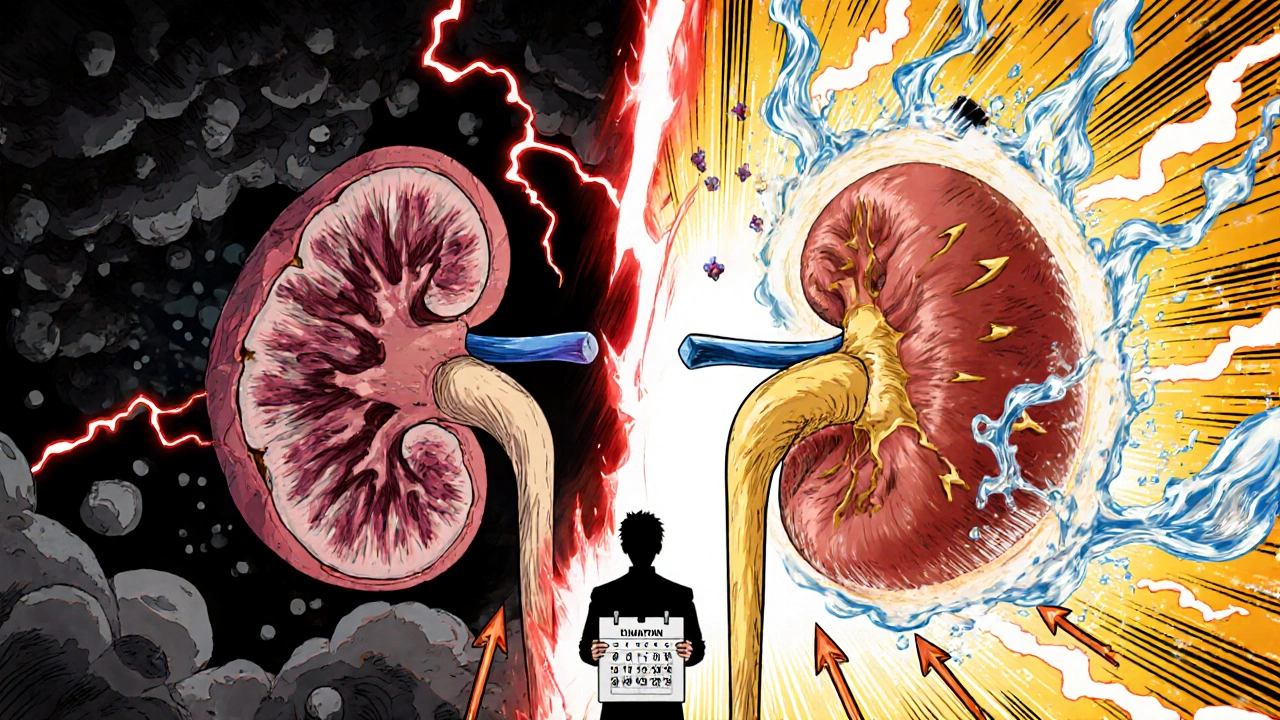
When to Avoid Tolvaptan
There are clear red flags. Don’t use tolvaptan if:
- You have severe liver disease (Child-Pugh Class B or C)
- You’re unable to drink fluids reliably (e.g., dementia, severe mobility issues)
- You have a history of unexplained liver enzyme spikes
- You’re pregnant or breastfeeding
- Your GFR is below 25 mL/min-there’s no proven benefit and higher risk of dehydration
Also, avoid combining it with other strong diuretics unless closely monitored. The combination can lead to sudden drops in blood pressure or kidney injury.
The Bigger Picture
Tolvaptan doesn’t cure kidney disease. But it changes the trajectory. It’s one of the few drugs in nephrology that’s shown to delay the need for dialysis by years-not months. In the TEMPO trial, patients on tolvaptan reached kidney failure 4.6 years later than those on placebo. That’s a huge win.
It’s also expensive. A year’s supply costs over $12,000 in the U.S. In New Zealand, it’s subsidized under the Pharmaceutical Schedule for ADPKD patients who meet strict criteria. That’s why access is still limited. But for the right person, it’s worth it.
For patients with ADPKD and high blood pressure, tolvaptan isn’t just another pill. It’s a tool that targets the disease’s core mechanism. It reduces fluid overload, lowers blood pressure, and slows kidney damage-all at once. That’s rare in modern medicine.
Does tolvaptan lower blood pressure in all types of kidney disease?
No. Tolvaptan’s blood pressure-lowering effect is strongest in autosomal dominant polycystic kidney disease (ADPKD), where excess fluid is driven by vasopressin. In other types like diabetic nephropathy or hypertensive kidney disease, the fluid imbalance comes from different mechanisms. Tolvaptan doesn’t work as well there, and it’s not approved for those conditions.
How long does it take for tolvaptan to lower blood pressure?
Most patients see a drop in systolic blood pressure within 1 to 2 weeks. The full effect usually shows by 4 to 6 weeks. The pressure-lowering effect is sustained over time, as long as the drug is taken and liver function remains normal.
Can I stop taking my other blood pressure meds if I start tolvaptan?
No. Tolvaptan is usually added to existing blood pressure medications, not used alone. It works differently than ACE inhibitors or diuretics. Many patients still need one or two other drugs to reach their target blood pressure. Never stop or change your current meds without your doctor’s guidance.
Why do I need monthly liver tests on tolvaptan?
Tolvaptan carries a risk of rare but serious liver injury. The FDA requires monthly liver function tests for the first 18 months because most cases occur early. If enzymes rise more than three times the normal level, the drug is stopped. After 18 months, testing drops to every three months if results are stable. This monitoring has made severe liver damage very uncommon.
Is tolvaptan safe if I have heart failure?
It’s generally not recommended. Tolvaptan removes water without replacing electrolytes, which can cause low blood pressure and worsen heart function in people with advanced heart failure. It’s also risky if you’re already on strong diuretics. Always tell your doctor if you have heart disease before starting tolvaptan.
What happens if I miss a dose of tolvaptan?
If you miss a dose, take it as soon as you remember, unless it’s close to your next scheduled dose. Don’t double up. Missing one dose won’t cause immediate problems, but consistent use is key to controlling fluid and blood pressure. Skipping doses regularly can reduce its effectiveness in slowing kidney growth.
Next Steps for Patients
If you have ADPKD and high blood pressure, talk to your nephrologist about whether tolvaptan could help. Ask about your kidney growth rate, liver health, and ability to manage daily fluid intake. If you’re eligible, start low, monitor closely, and stay hydrated. It’s not a magic bullet, but for the right person, it’s one of the most effective tools we have to protect the kidneys and keep blood pressure under control without adding more pills to the mix.
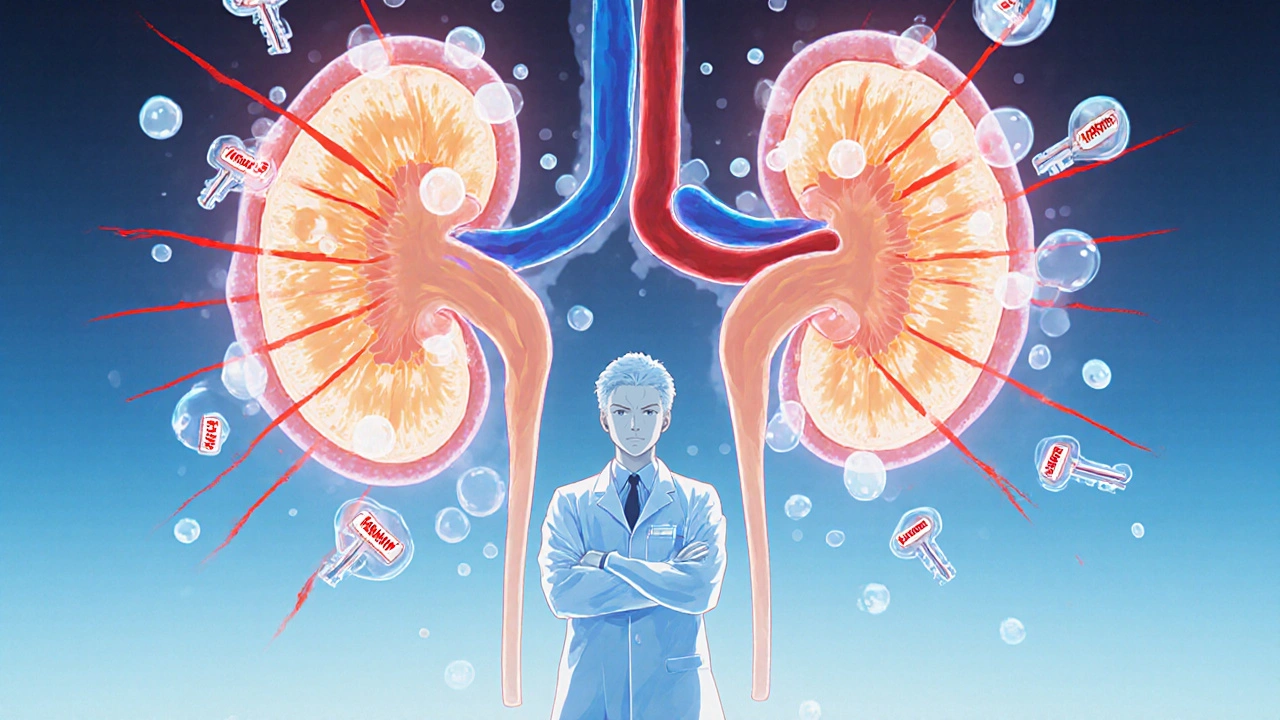
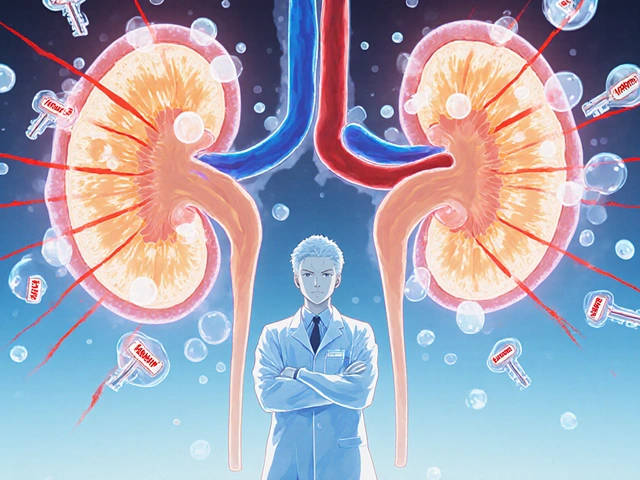

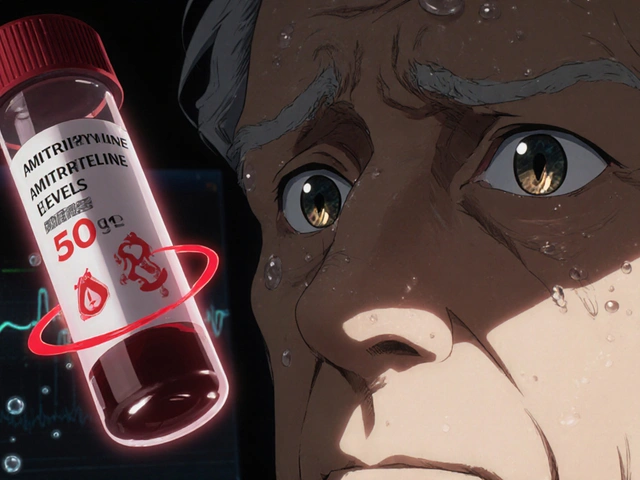


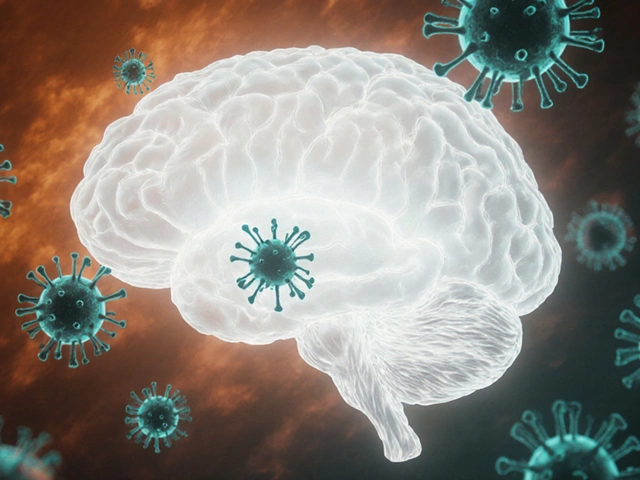
Write a comment
Your email address will be restricted to us